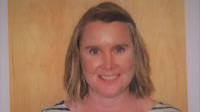The article Copyright and Fair Use in the UMUC Online or
Face-To-Face Classroom was beneficial for me as a teacher. The article was informative in that it
provided very specific guidelines for how to use different copyrighted
materials. It also explicitly defined
what exactly copyright is – “copyright is a legal device that provides the
creator of a work of art or literature, or a work that conveys information or
ideas, the right to control how the work is used”.
As a teacher, I use many different forms of media. The article clearly defined permissible
amounts of material that may be copyrighted. With my area of teaching being
Pre-K/K it is unlikely that I will be copying large quantities of text material
to use with my students. If I were to
find it necessary to copy text over the limit of “fair use” the article
explains when permission is required – “when you intend to use the material for
commercial purposes, when you want to use the materials repeatedly, and when
you want to use a work in its entirety, especially when it’s longer than 2,500
words."http://sites.umuc.edu/library/libhow/copyright.cfm
To obtain permission to use copyrighted material the article
offers assistance if you are UMUC faculty as well as providing a sample letter
as a guide if you are not faculty at UMUC.
I found the sample letter to be very simple however it is geared toward
college/university level use. Additionally,
the article goes on to explain Open Educational Resources and T.E.A.C.H {Technology,
Education, and Copyright Harmonization Act). OER’s are “teaching, learning, and
research resources that reside in the public domain or have been released under
intellectual property license that permits their free use or re-purposing by
others." I found the information in this article to be
useful in my career as a teacher.
To obtain permission to use copyrighted material the article
offers assistance if you are UMUC faculty as well as providing a sample letter
as a guide if you are not faculty at UMUC.
I found the sample letter to be very simple however it is geared toward
college/university level use. Additionally,
the article goes on to explain Open Educational Resources and T.E.A.C.H {Technology,
Education, and Copyright Harmonization Act). OER’s are “teaching, learning, and
research resources that reside in the public domain or have been released under
intellectual property license that permits their free use or re-purposing by
others” (Atkins, Brown, and Hammond, 2007, p.4). I found the information in this article to be
useful in my career as a teacher.






